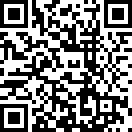 |
Research Article
Barriers to utilization of skilled birth attendance among post-natal women in a North Horr ward, Marsarbit County, Kenya: A cross-sectional study
1 Department of Health Systems, Amref International University, School of Public Health, Nairobi, Kenya
Address correspondence to:
Kame Wato Kofo
Amref International University, Department of Health Systems, School of Public Health, Nairobi,
Kenya
Message to Corresponding Author
Article ID: 100012M01KK2024
Access full text article on other devices

Access PDF of article on other devices

How to cite this article
Kofo KW, Matiang’i M, Akolo M. Barriers to utilization of skilled birth attendance among post-natal women in a North Horr ward, Marsarbit County, Kenya: A cross-sectional study. Edorium J Matern Child Health 2024;8(2):1–11.ABSTRACT
Aims: The purpose of this study was to examine barriers to the utilization of skilled birth attendance among women in North Horr ward, Marsarbit County. Specific aims were to assess potential demographic, economic, sociocultural, and health facility barriers that facilitate home deliveries.
Methods: A mixed methods approach was used. A survey questionnaire captured quantitative data from 306 women, while 15 semi-structured interviews were conducted to support the quantitative findings. Quantitative data were analyzed through descriptive and inferential statistics using Stata version 15, while qualitative data were analyzed thematically using NVIVO and presented in tabular form.
Results: A total of 306 women participated (mean age=33 years). 92% (n=281) were married, 97% (n=297) had children, unemployment was 98% (n=300). Age, costs of transport, poor infrastructures, lack of money, and all health-related factors were significantly associated with place of delivery (p<0.0001). 50% (n=153) reported health facility as place of last delivery, 47% (n=144) delivered at home, though sociocultural factors like traditional birth attendant (TBA) availability (80% [n=123]) influenced the choice. The regression model showed no significant relationships for sociocultural barriers (p>0.05). Qualitative findings revealed financial constraints, sociocultural norms, and health infrastructure deficits as major barriers to skilled birth attendance utilization.
Conclusion: Multifaceted barriers interact as barriers to the utilization of skilled birth attendance among women in North Horr ward, Marsarbit County. Initiatives aimed at improving skilled birth attendance utilization must judiciously tackle poverty, remoteness, inconsistent quality care and traditional mindsets.
Keywords: Economic barriers Health-facility barriers, Maternal healthcare utilization, Skilled birth attendance, Sociocultural barriers
SUPPORTING INFORMATION
Author Contributions
Kame Wato Kofo - Substantial contributions to conception and design, Acquisition of data, Analysis of data, Interpretation of data, Drafting the article, Revising it critically for important intellectual content, Final approval of the version to be published
Micah Matiang’i - Revising it critically for important intellectual content, Final approval of the version to be published
Maureen Akolo - Revising it critically for important intellectual content, Final approval of the version to be published
Guaranter of SubmissionThe corresponding author is the guarantor of submission.
Source of SupportNone
Consent StatementWritten informed consent was obtained from the patient for publication of this article.
Data AvailabilityAll relevant data are within the paper and its Supporting Information files.
Conflict of InterestAuthors declare no conflict of interest.
Copyright© 2024 Kame Wato Kofo et al. This article is distributed under the terms of Creative Commons Attribution License which permits unrestricted use, distribution and reproduction in any medium provided the original author(s) and original publisher are properly credited. Please see the copyright policy on the journal website for more information.




